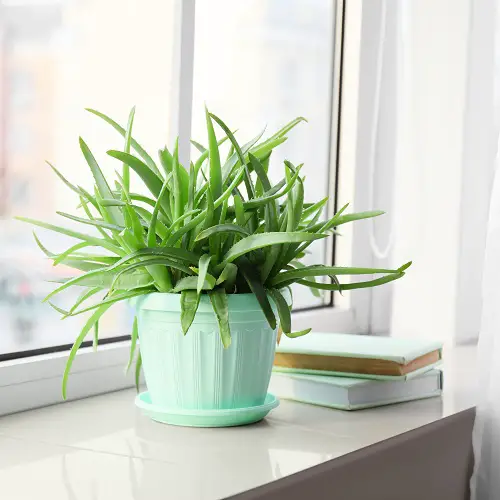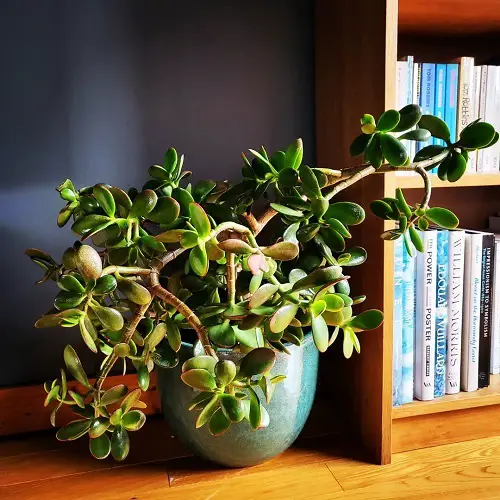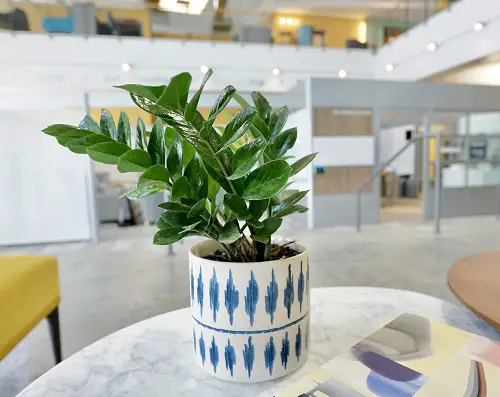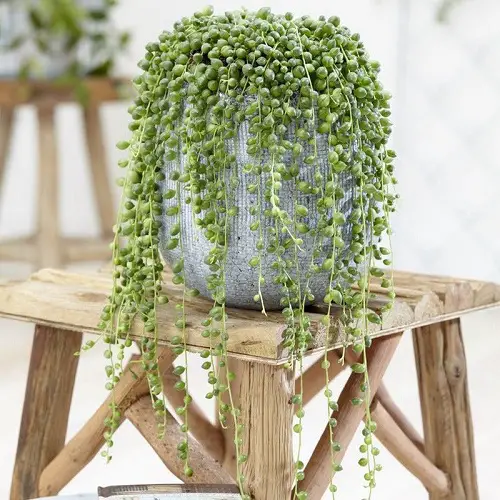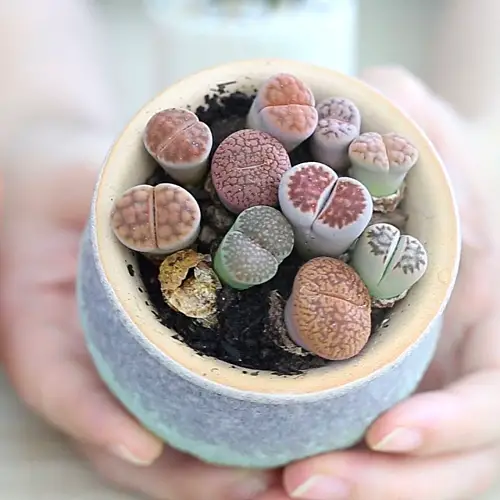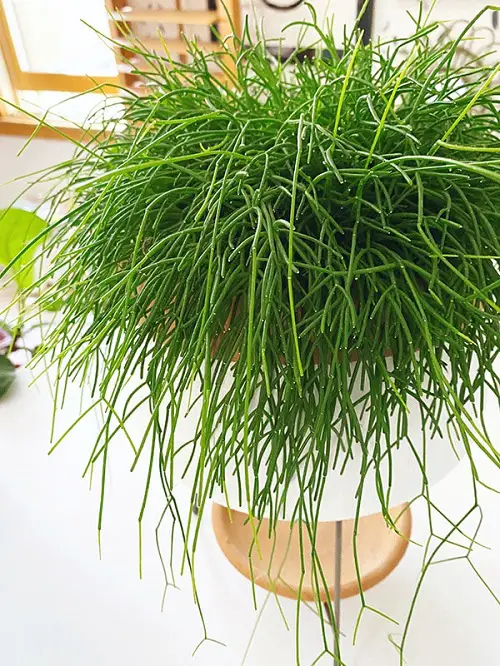These plants are quite pro at surviving without fertilization for an entire year – making them great for forgetful gardeners!
Plants in this list are slow-growing and prefer poor soil; this is why it is fine to fertilize them less often if you want. If you’re busy, forgetful, or don’t want to care much, grow these and feed them using a slow-release balanced fertilizer before the start of their active growth period once in a year.
Best Homemade Fertilizers for Indoor Plants in Water
Indoor Plants that Don’t Need Fertilizer Before a Year
1. Aloe Vera
Botanical Name: Aloe barbadensis miller
Being a succulent, this plant stores moisture and essential nutrients in its thick leaves, minimizing the need to be fed for a really long time.
2. Jade Plant
Botanical Name: Crassula ovata
What works in the jade plant’s favor is its extremely slow growth rate, which reduces the need for fertilization. The succulent is also adapted to grow in arid conditions, so it stores the nutrients in its fleshy leaves and uses them slowly.
3. Snake Plant
Botanical Name:Dracaena trifasciata
This champion indoor specimen will continue to grow if you just water it regularly and keep the plant in indirect light! As snake plant also follows CAM, it is quite effective in storing water and nutrients.
4. ZZ Plant
Botanical Name: Zamioculcas zamiifolia
The plant has a bulbous root system – rhizomes. They are quite effective in storing water and nutrients, enabling Zamioculcas zamiifolia to thrive without additional fertilization.
5. Lucky Bamboo
Botanical Name: Dracaena sanderiana
This plant has a slower growth rate, so don’t worry about feeding it very often! If you are growing the plant in water, adding diluted aquarium water whenever you change it once will support its nutrient requirement! Still, if it’s not growing well, mix a pinch of balanced fertilizer.
6. Ponytail Palm

Botanical Name: Beaucarnea recurvata
The plant’s elephant foot-like trunk (the reason for its other name, Elephant foot palm) stores water and nutrients, which Ponytail Palm uses to survive in any growing conditions, eliminating the need for frequent fertilization.
7. Haworthia
Botanical Name: Haworthia
Just like aloe, Haworthia’s thick and fleshy leaves serve the same purpose! Coupled with the slow growth rate, it does not need frequent fertilization!
8. String of Pearls
Botanical Name: Senecio rowleyanus
Being a succulent, String of Pearls’ grows slowly and don’t ask for routine feeding, you can do this 2-3 times during the growing season.
9. Bishop’s Cap Cactus
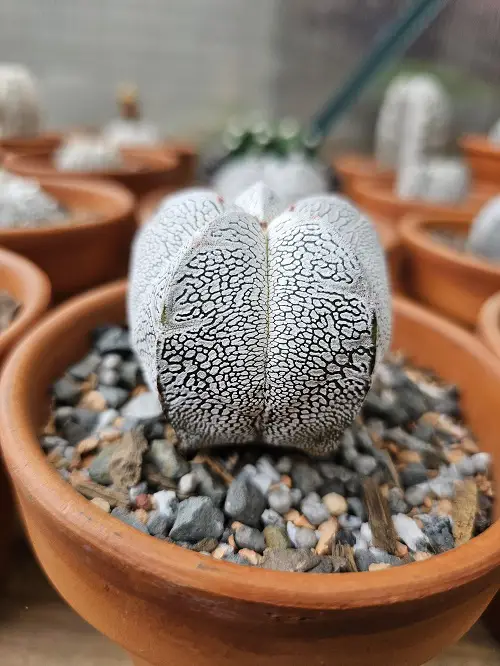
Botanical Name: Astrophytum myriostigma
Cacti, in general, have minimal nutrient requirements as they are naturally adapted to arid environments. Astrophytum is no different and has a specialized metabolism that works on CAM photosynthesis, helping it conserve water and nutrients.
10. Rabbit’s Foot Fern
Botanical Name: Davallia fejeensis
What sets this fern apart from the others in its family is its drought-tolerant and nutrient-efficient nature, enabling Rabbit’s Foot Fern to go on without additional feed for a year without any trouble!
11. Living Stones
Botanical Name: Lithops
Lithops are extremely slow growers (more than many common succulents!) and are also well-adapted to thrive in nutrient-poor soils. These plants can even go beyond a year without any feeding!
12. Wax Plant
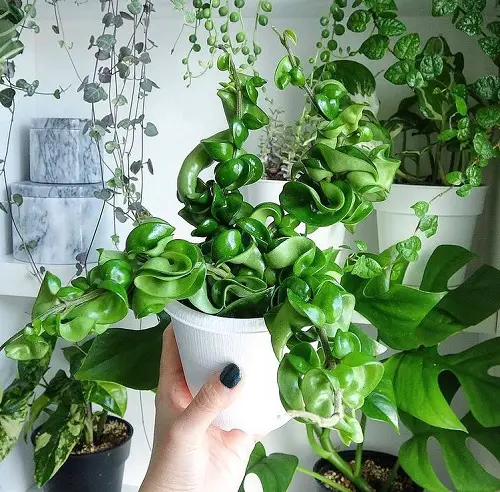
Botanical Name: Hoya
Being epiphytic, hoya plants are natively adapted to survive by growing on trees, which means they don’t require frequent fertilization like other houseplants to thrive.
13. Mistletoe Cactus
Botanical Name: Rhipsalis baccifera
This plant is also an epiphyte and grows quite well in minimal soil with little nutrients. Mistletoe Cactus is adept at storing nutrients, making it go without the need of feeding for long periods of time.


